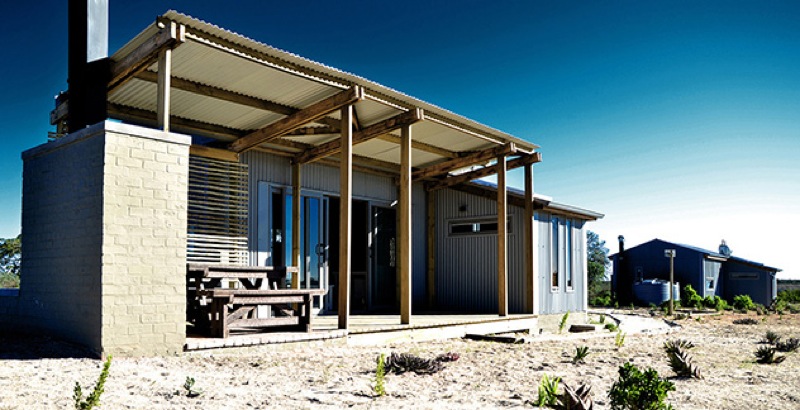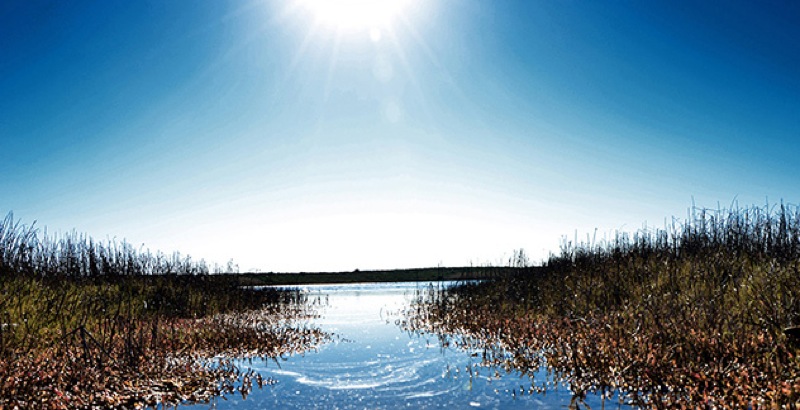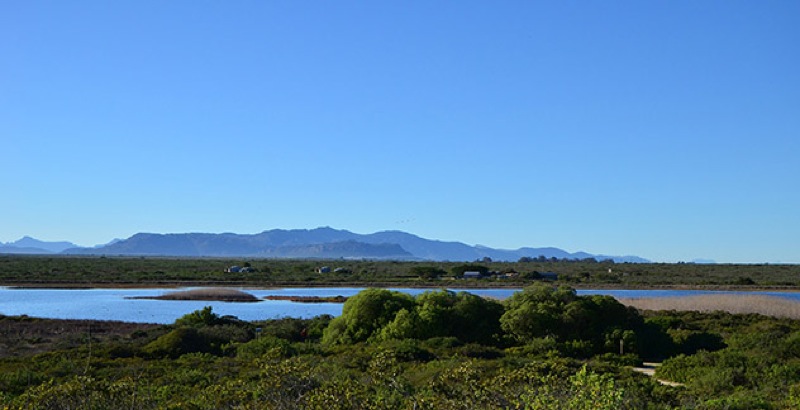A farmer named Pierre Rocher arrived in this area in 1839. To improve summer grazing for his livestock, Rocher and his workers closed off the mouth of the Papkuils River, forcing it to flow behind the dunes that separate the sandveld from the sea. Thus, inadvertently, a perfect habitat for water birds of all descriptions was created. The Papkuils (bulrush) River rises 25km away in the Piketberg. When full, the pan is less than 2m deep, covers 110ha and is just over 6km long. But while clearly a thinker, squire Rocher was not smitten by ornithology. Instead, duck hunts were organised annually on New Year’s Day, by invitation only. In 1967, Rocherpan was established as a nature reserve and, by way of celebration, every spring the reserve is covered in a mass of wild flowers.
A small interpretation centre can be found just inside of the reserve gate. Day visitors can obtain their self-issue permits here. An honesty-box is to hand. The reserve office is 100m up the road.
Rocherpan has two choices of self-catering accommodation, both of which are rustic and unusual. On the edge of the pan, shielded by trees and with views across the water to the Piketberg, is a basic cottage that sleeps six people in two rooms. It has a lounge, kitchen and a shower/toilet. The kitchen is equipped with a gas fridge and stove, as well as pots, pans and utensils. Gas provides hot water and lights, but bedding must be brought. The cottage has direct access to one of Rocherpan’s two bird hides, both of which are built well apart on the western edge of the pan. For lovers of the sea and the sand, a bungalow of three rondavels (sleeps six people) has been built on top of a dune in the northern section of the reserve. It has spectacular views up and down the coast and inland. The kitchen has a gas fridge and stove, pots, pans and utensils. A braai (barbeque) place is situated off to the seaward side of the bungalow. There is no electricity, but solar lights are provided, as are mattresses. Rocherpan does not have its own supply of drinking water – this is trucked in weekly from the nearby town of Dwarskersbos and pumped into tanks. This water can be used for washing, but there is no shower or bath.
Two essential activities at Rocherpan are birding and walking. Rocherpan and birding are synonymous. The combination of land, vlei and marine environments provides habitats for a variety of birds. Pelicans and flamingos are often seen at the pan and are listed in the Red Data book for birds. The pan is also one of the Cape shoveller’s important breeding and moulting sites. A checklist of the 183 species recorded at Rocherpan is available at the interpretation centre. The beach here goes on forever, and one can simply walk and walk and walk. The marine protected area was declared in 1988 and stretches 500m seawards of the high water mark for the length of the nature reserve. Rare and endangered black oystercatchers are just one of the avian observations to be made along this coast. From about June to September, southern right whales can be seen from anywhere along the beach, although the dunes afford better views.
The Cape Overberg:
Overberg simply means “over the mountain“, that is, eastwards, away from Cape Town, beyond the ranges of the Hottentots Holland. While wheat fields growing golden in the sun might appear to dominate here, this is something of an optical illusion, for the Overberg is really a floral kingdom of some diversity. Here one will find areas of fynbos richer than anywhere else in the Cape. Here also, after an absence of many years (when they were hunted almost to extinction), are the southern right whales. They come puffing into the bays of the Overberg like clockwork every year from June to November, and draw crowds of visitors.



